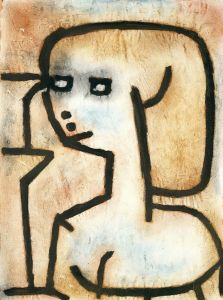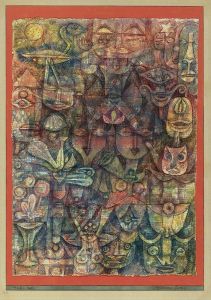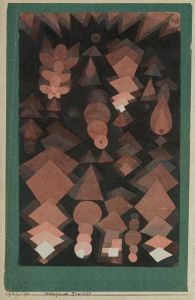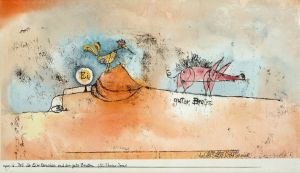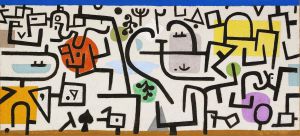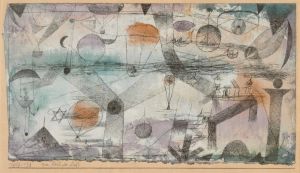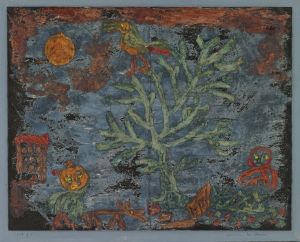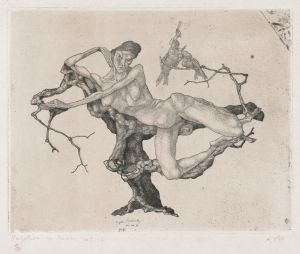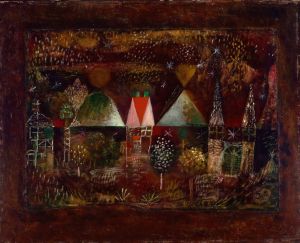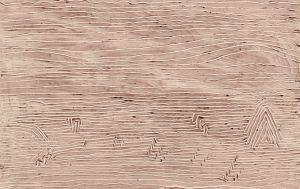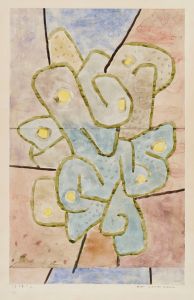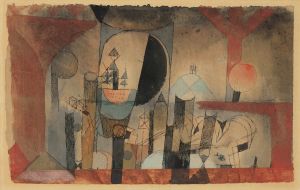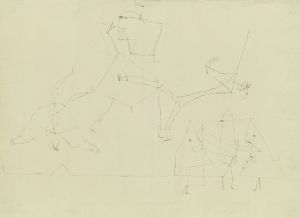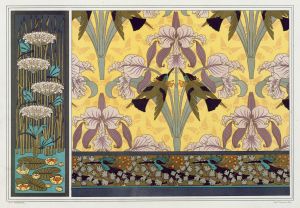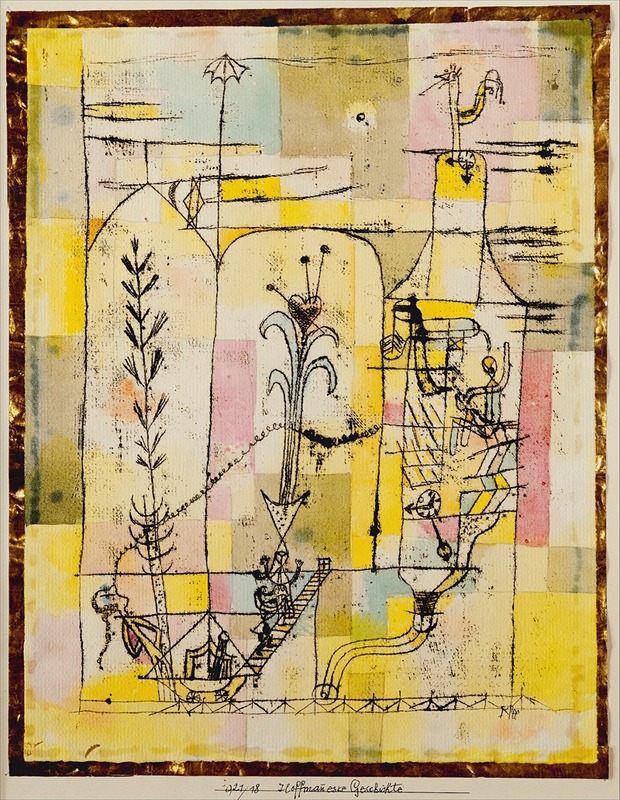
Tale à la Hoffmann
A hand-painted replica of Paul Klee’s masterpiece Tale à la Hoffmann, meticulously crafted by professional artists to capture the true essence of the original. Each piece is created with museum-quality canvas and rare mineral pigments, carefully painted by experienced artists with delicate brushstrokes and rich, layered colors to perfectly recreate the texture of the original artwork. Unlike machine-printed reproductions, this hand-painted version brings the painting to life, infused with the artist’s emotions and skill in every stroke. Whether for personal collection or home decoration, it instantly elevates the artistic atmosphere of any space.
Paul Klee's "Tale à la Hoffmann" is a notable work by the Swiss-born artist, created in 1921. Klee, a prominent figure in the development of modern art, was known for his unique style that combined elements of expressionism, cubism, and surrealism. His works often reflect a deep interest in color theory and a playful, childlike imagination, which is evident in "Tale à la Hoffmann."
The painting's title suggests an inspiration drawn from the works of E.T.A. Hoffmann, a German Romantic author known for his fantastical and often darkly whimsical stories. Hoffmann's influence on Klee is not surprising, as Klee was deeply interested in literature and music, both of which frequently informed his artistic output. The connection to Hoffmann implies a narrative or fantastical element within the painting, inviting viewers to explore the imagery with a sense of wonder and imagination.
"Tale à la Hoffmann" is characterized by Klee's distinctive use of color and form. The painting features a complex interplay of geometric shapes and vibrant colors, creating a dynamic composition that draws the viewer's eye across the canvas. Klee's use of color is particularly noteworthy; he often employed a technique that involved layering translucent washes of color to achieve a luminous effect. This approach is evident in "Tale à la Hoffmann," where the colors seem to glow and shift, adding to the dreamlike quality of the work.
Klee's work during this period was heavily influenced by his time at the Bauhaus, where he taught from 1921 to 1931. The Bauhaus was a revolutionary art school in Germany that sought to unify art, craft, and technology. Klee's teaching and his interactions with other artists at the Bauhaus, such as Wassily Kandinsky and Lyonel Feininger, played a significant role in the development of his artistic style. "Tale à la Hoffmann" reflects the Bauhaus emphasis on abstraction and the exploration of form and color.
The painting is also indicative of Klee's interest in the subconscious and the exploration of inner worlds. His work often blurs the line between reality and fantasy, encouraging viewers to engage with the artwork on an emotional and intuitive level. This aspect of Klee's art aligns with the broader surrealist movement, which sought to unlock the creative potential of the unconscious mind.
"Tale à la Hoffmann" is housed in the Kunstmuseum Basel in Switzerland, which holds one of the most comprehensive collections of Klee's work. The museum's collection provides insight into the breadth of Klee's artistic exploration and his contribution to modern art.
In summary, "Tale à la Hoffmann" exemplifies Paul Klee's innovative approach to art, characterized by a synthesis of color, form, and narrative inspired by literary sources. The painting stands as a testament to Klee's ability to transcend traditional artistic boundaries and create works that continue to captivate and inspire audiences.





